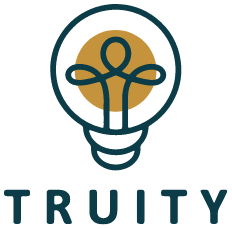Middle school teachers held about 606,500 jobs in 2021. The largest employers of middle school teachers were as follows:
| Elementary and secondary schools; local | 85% |
Most states have tenure laws, which provide job security after a certain number of years of satisfactory teaching.
Middle school teachers may find it rewarding to watch students develop new skills and gain an appreciation for knowledge and learning. However, teaching may be stressful. Schools may have large classes and lack important teaching tools, such as current technology and textbooks. Some states are developing teacher mentoring programs and teacher development courses to help with the challenges of being a teacher.
Working with middle school students as they become adolescents also can be challenging. Teachers need to be aware of and understand what their students are going through outside of the classroom.
Work Schedules
Middle school teachers generally work during school hours when students are present. They may meet with parents, students, and other teachers before and after school. Teachers who coach sports or advise clubs generally do so before or after school. They often spend time in the evenings and on weekends grading papers and preparing lessons.
Many teachers work a traditional 10-month school year and have a 2-month break during the summer. They also have a short midwinter break. Some teachers work during the summer.
Teachers in districts with a year-round schedule typically work 9 weeks in a row and then have a break for 3 weeks before starting a new school session.
Middle school teachers typically need a bachelor’s degree. In addition, public school teachers must have a state-issued certification or license.
Education
All states require public middle school teachers to have at least a bachelor’s degree. Many states require middle school teachers to major in a content area, such as mathematics or history. Other states require middle school teachers to major in elementary education.
Middle school teachers typically enroll in their college’s teacher education program, which instructs them on presenting information to students of different abilities and backgrounds. Programs typically include a student-teaching program, in which they work with a mentor teacher and get experience teaching students in a classroom setting. For information about teacher preparation programs in your state, visit Teach.org.
Some states require middle school teachers to earn a master’s degree after receiving their teaching certification and obtaining a job.
Teachers in private schools do not need to meet state requirements. However, private schools typically seek middle school teachers who have a bachelor’s degree and a major in elementary education or a content area.
Licenses, Certifications, and Registrations
All states require teachers in public schools to be licensed or certified in the specific grade level that they will teach. Those who teach in private schools typically do not need a license. Requirements for certification or licensure vary by state but generally involve the following:
- A bachelor’s degree with a minimum grade point average
- Completion of a student-teaching program
- Passing a background check
- Passing a general teaching certification test, as well as a test that demonstrates their knowledge of the subject they will teach.
For information about certification requirements in your state, visit Teach.org. Teachers are often required to complete professional development classes to keep their license or certification. Some states require teachers to complete a master’s degree after receiving their certification and obtaining a job.
All states offer an alternative route to certification or licensure for people who already have a bachelor’s degree but lack the education courses required for certification. Some alternative certification programs allow candidates to begin teaching immediately under the supervision of an experienced teacher. These programs cover teaching methods and child development. After they complete the program, candidates are awarded full certification. Other programs require students to take classes in education before they can teach.
Advancement
Experienced teachers may advance to serve as mentors to new teachers; they may also become lead teachers. In these positions, they help less experienced teachers to improve teaching skills.
With additional education or certification, teachers may become school counselors, school librarians, or instructional coordinators. Some become assistant principals or principals, both of which generally require additional education in education administration or leadership. For more information, see the profiles on school and career counselors, librarians, instructional coordinators, and elementary, middle, and high school principals.
Middle school teachers typically have an interest in the Creating and Helping interest areas, according to the Holland Code framework. The Creating interest area indicates a focus on being original and imaginative, and working with artistic media. The Helping interest area indicates a focus on assisting, serving, counseling, or teaching other people.
If you are not sure whether you have a Creating or Helping interest which might fit with a career as a middle school teacher, you can take a career test to measure your interests.
Middle school teachers should also possess the following specific qualities:
Communication skills. Teachers must collaborate with other teachers and special education teachers. In addition, they need to discuss students’ needs with parents and administrators.
Patience. Working with students of different abilities and backgrounds can be difficult. Middle school teachers must be patient when students struggle with material.
Resourcefulness. Middle school teachers need to be able to explain difficult concepts in terms that students can understand. In addition, they need to be able to get students engaged in learning and adapt lessons to each student’s needs.
The median annual wage for middle school teachers was $61,320 in May 2021. The median wage is the wage at which half the workers in an occupation earned more than that amount and half earned less. The lowest 10 percent earned less than $45,510, and the highest 10 percent earned more than $99,470.
In May 2021, the median annual wages for middle school teachers in the top industries in which they worked were as follows:
| Elementary and secondary schools; local | $61,680 |
Middle school teachers generally work school hours when students are present. They may meet with parents, students, and other teachers before and after school. Teachers who coach sports or advise clubs generally do so before or after school. Teachers often spend time in the evenings and on weekends grading papers and preparing lessons.
Many teachers work the traditional 10-month school year and have a 2-month break during the summer. They also have a short midwinter break. Some teachers work during the summer.
Teachers in districts with a year-round schedule typically work 9 weeks in a row and then have a break for 3 weeks before starting a new school session.
Employment of middle school teachers is projected to grow 4 percent from 2021 to 2031, about as fast as the average for all occupations.
About 47,300 openings for middle school teachers are projected each year, on average, over the decade. Many of those openings are expected to result from the need to replace workers who transfer to different occupations or exit the labor force, such as to retire.
Employment
The number of students in public middle schools is expected to decrease over the projections decade. The number of classes needed to accommodate these students will depend on class size, with larger classes requiring fewer teachers than smaller ones.
Employment growth for middle school teachers also will depend on state and local government budgets. If state and local governments experience budget deficits, they may increase class size while maintaining or reducing teaching staff levels. Conversely, budget surpluses at the state and local level could lead to additional employment growth for middle school teachers.
For more information about teaching and becoming a teacher, visit
American Federation of Teachers
National Education Association
For more information about teacher preparation programs, visit
Council for the Accreditation of Educator Preparation

